Must Have Portable Apps for Windows

Portable apps are the apps that run independently from the operating system (although they are normally OS dependent), do not change the system files, and keep all the necessary data in the program’s folders. They are ideal for people on the go, who can simply download and run the programs from external hard drives, flash drives, CD ROMS, and of course, their computers and laptops. These portable apps do not clutter your system and if you decide that you no longer have use for them, all you have to do is delete them without having to worry about incomplete un-installs and left over files. These programs are often scaled down, but fully functional, multi-media players, email clients, instant messengers, graphic viewers, image editors, and office software.
Listed below are some of the must-have portable apps for Windows:
Open Office Portable
 A fully functional and complete office suite, which comes with word processor, presentation tool, drawing tool, spreadsheet, and database. Using it, you can create, edit, save, and process almost any kind of office document just like you would with some of the paid office products.
A fully functional and complete office suite, which comes with word processor, presentation tool, drawing tool, spreadsheet, and database. Using it, you can create, edit, save, and process almost any kind of office document just like you would with some of the paid office products.
ClamWin Portable
A portable anti-virus program, which you can take with you anywhere you go. The program comes with one-click installation, intuitive interface, high detection rates for spyware and viruses, and regular updates.
Mozilla Firefox Portable
Fast, safe, and speedy, Firefox is the browser of choice for many Internet users and its portable version allows you to carry your browser and your settings with you everywhere you go. You can have it installed on a flash drive, CD ROM, or any other removable media and use it on any computer or laptop, without having to worry about your passwords and browsing history being seen by others. All changes that you make and all settings are stored in the apps’ directory and not on the computer, giving you an additional layer of security!
7-Zip Portable
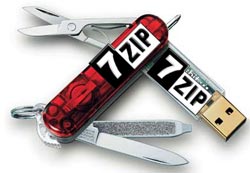 A must-have app if you want to be able to work with jar, zip, rar, 7Z, and other popular zipped file formats. The program can also un-pack more than 20 different archives, it can shrink your files to up to 40%, and offers AES-256 encryption as well.
A must-have app if you want to be able to work with jar, zip, rar, 7Z, and other popular zipped file formats. The program can also un-pack more than 20 different archives, it can shrink your files to up to 40%, and offers AES-256 encryption as well.
Foxit PDF reader Portable
Much smaller than Acrobat Reader, the portable Foxit PDF reader launches in a split second, allows you to add annotations, and is spyware and adware free.
InfraRecorder Portable
Allows you to create custom data, audio, or mixed disks and burn them on the go. It can erase re-writable disks in four different ways, record dual-layer DVDs, record images (ISO and others), import sessions, and save data to files.
KM Player (KMP)
This portable player allows you to listen to music and watch video files, change the playback speed, and use various audio and video effects. In addition, the portable player supports most of the common media file formats, making it easy to use and eliminating the need for downloading and installing numerous codecs.
SIW
A portable diagnostic tool, which will analyze the hardware on any computer and display important information such as your computer’s CPU, BIOS, motherboard, disk drives, ports, memory, printers, installed programs, processes, and more. Unlike the built-in Windows system information utilities, SIW is easy to use and provides detailed information about the machine and the operating system itself.
Pidgin Messenger Portable
 Lets you chat with friends and colleagues on Facebook, Yahoo, GTalk, MSN, and Skype.
Lets you chat with friends and colleagues on Facebook, Yahoo, GTalk, MSN, and Skype.
XnView
A versatile image viewer, which works with more than 50 image file formats, displays images quickly, and allows you to rotate, resize, and use filters.
What portable apps are a must-have on your thumb drive? Please share them with us in the comments.
14 Top Sites to Find Premium Graphics

While every seasoned designer wants his or her work to be original and stand out, incorporating separate design elements, vector graphics, brushes, and templates into your projects will speed their completion up and help you work smarter. It is wise to keep all the graphic elements that you have designed handy, so you can always find them on your hard drive and include them in your future work, but you can also find hundreds of websites, which offer premium design graphic packages at very reasonable price. Listed below are some of the places, where you can find just about anything a designer might need – from icons and gradients to premium WordPress themes:
Grafpedia
Grafpedia has a VIP download section, which you can access after paying a yearly subscription fee. Once a member, you have full and unlimited access to premium tutorials, source files, HTML and CSS code, and numerous design resources, including brushes, vectors, icons, and textures.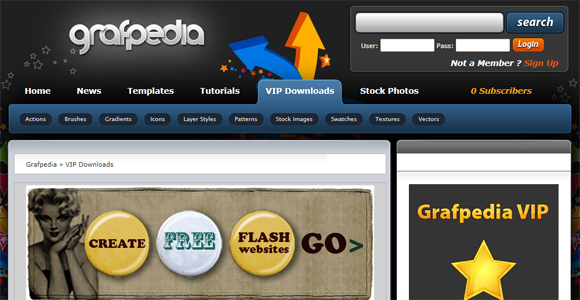
Web Design Ledger
Web Design Premium offers instant access to premium WordPress themes, Photoshop brushes, vectors, and more for a small monthly fee.
We Graphics
We Graphics offers monthly, recurring yearly, or one-time yearly payment options and access to high quality premium graphic packages that include vectors, textures, mockups, icons, and brushes.
Media Loot
Media Loot has an awesome collection of scalable vectors, thousands of icons, print templates, and high-resolution textures. You can choose from three payment options (causal, professional, and elite) and select the one that matches your needs.
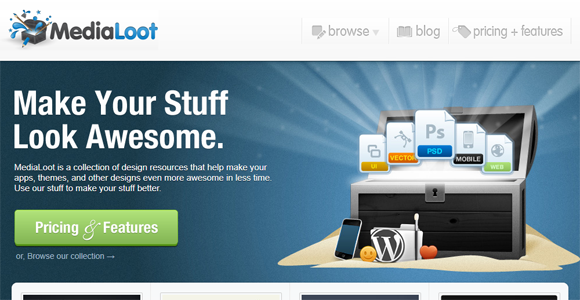
Arsenal
Arsenal sells various excellent packs, which include Photoshop brush collections, texture collections, mockup templates, fonts, vectors, and video tutorials.
Tuts Plus Premium
Tuts Plus offers four different payment options and the membership gives access to premium tutorials, motion graphics, vectors and illustrations, computer graphics, music and audio, flash, photography, and other premium sections.
Artbox 7
Artbox 7 sells brush, icon, and vector sets, as well as a complete designer set, which includes 523 packs and more than 7650 elements.
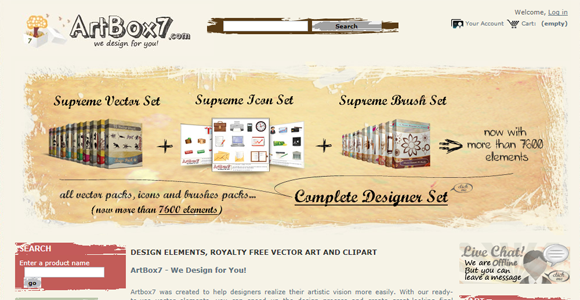
Brush Eezy
Brush Eezy has a great collection of patterns, brushes, PSD files, shapes, styles, and gradients. The premium section of the website offers three monthly subscription options, allowing 10, 20, and unlimited monthly downloads. With instant downloads, huge discounts, credit roll over, and requests, Brush Eezy premium is well worth joining!
Icon Dock
Icon Dock – if you are on the hunt for icons, then this is the website to bookmark. You can purchase single icons for a dollar or a little more, or buy complete sets and use the top quality icons in your own work.
Graphic River
With close to 25 000 graphics and prices starting from one dollar, Graphic River is well worth checking out. On the web site, you can find graphics, print templates, textures, vectors, web elements, fonts, add-ons, objects, presentation templates, and icons.

iStockPhoto
IStockPhoto is one of the best-known sites, offering premium graphic packages. Once you join, you can purchase credits and then use these credits to buy photos, illustrations, flash, video, or audio files.
Graphstock
Graphstock has stock photos, isolated objects, textures, various vectors, as well as WordPress, site, PSD, email, and other templates. In addition, you can find numerous Photoshop add-ins such as styles, shapes, brushes, actions, and gradients.
Cutcaster
Cutcaster is packed with images, conveniently grouped in twelve popular categories. The credits start from a dollar for a 480×320-pixel image and go up to fifteen dollars per credit for high resolution, 5900×3800 pixel images.

Big Stock Photo
Big Stock Photo has a vast collection of more than five million royalty-free images. The credits are sold for $0.99 up to $1.69 per credit, depending on the amount you wish to purchase, the images are divided into 14 main categories, and you can browse them by category, search them by keyword, or sort them out according to popularity.
Premium graphics can make a web designers job much easier and these sites have a great selection. Do you have a favorite not in this list? Please share it in the comments.
Go Local – How Web Designers Can Find Local Business

Finding local clients comes with numerous advantages and it is something well worth looking into. While working online allows you to solicit business from any country in the World, operating in different time zones, dealing with cultural differences, and no face-to-face contact are just a handful of the hurdles that you need to overcome. In comparison, new clients are far more likely to trust and hire someone from their own community, and you can visit local businesses, make direct phone calls, or find other ways to get in touch with them and build a strong, long-term personal relationship.
Here are some ideas that could help you find local customers:
Local Advertisement
 Advertising in your local newspaper or radio stations is an excellent way to reach new local customers and build a brand name. You can always start small and spend more and more money on local advertisement as your business rows.
Advertising in your local newspaper or radio stations is an excellent way to reach new local customers and build a brand name. You can always start small and spend more and more money on local advertisement as your business rows.
Distribute flyers and business cards
Print out some catchy flyers and business cards, list your contact details and your website, and distribute as many of them as possible.
Try Word of Mouth
Networking in your local community is another way to find new clients. Inform all your friends and acquaintances that you are trying to expand your business and looking for new customers, give them your business card, and ask them to recommend your services to the people that they know.
Utilize Cold calls
 Even though many people frown upon cold calling, it is still an effective way to get business, as long as it is executed properly. Do not call indiscriminately, but rather limit the number of local businesses that you are trying to contact, learn a few details about their operation, pick up the phone, and explain how you can help them grow and profit from your services.
Even though many people frown upon cold calling, it is still an effective way to get business, as long as it is executed properly. Do not call indiscriminately, but rather limit the number of local businesses that you are trying to contact, learn a few details about their operation, pick up the phone, and explain how you can help them grow and profit from your services.
Advertise in Local Business Directories
Many clients are searching for website designers by browsing local offline and online business directories and making sure that you can be found in most of them will help you grow your business.
Attend Local Events
If there are conferences, fairs, or other local business events, attend them, meet other business owners, inform them of the services that you offer, and make sure to give them your business card as well.
Join the Chamber of Commerce
 This will help you build strong relationships with other local business owners and these contacts are likely to bring you new orders.
This will help you build strong relationships with other local business owners and these contacts are likely to bring you new orders.
Target Local Keywords
When building your website, make sure to target some local keywords. This will help customers, looking for local web designers find your website, check out your portfolio, and get your contact details.
Use Targeted PPC Advertising
Google and the other search engines allow you to run pay-per-click campaigns, where you can target a specific geographic area. This allows you to get most of your ads and attract local customers by using keywords, specific to your geographic area.
Try Out Google, Yahoo, and Bing business listings
 Make sure to list a local telephone number and your correct address rather than a PO Box and a 1-800 number.
Make sure to list a local telephone number and your correct address rather than a PO Box and a 1-800 number.
In addition to these simple steps, you can “get local” on any of the major social network sites that you use, join some local internet forums and groups, encourage your customers to leave reviews on local websites, swap links with other local sites, issue press releases, and sponsor small local events. While competing globally is getting tougher by the minute, many clients are delighted to work with local businesses, knowing that every dollar that they spend will go back into their community!
Battle of the Social Networks: Google+ vs Facebook

After Google Buzz and Wave, which never really took off, Google is launching its most powerful social networking project to date, Google+. At the time of this writing, you can join Google+ by invite only, but the interest is so great that many believe that Google finally got it right and Facebook has its first real rival. While the features, which Google+ offers are nothing revolutionary, the project seems to have taken the best from the other social networking sites, making it extremely easy for people to stay in touch with friends and family. It is still very early to judge if Google+ will make a dent in the Facebook’s business and take away some of their 700-million strong user base, but it is clear that the two social networks have quite a few features in common, but also differ in many aspects.
Google+ vs. Facebook – Head-to-Head Comparison
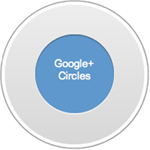 Google+ Circles – Google+ uses Circles rather than Groups and even though the two concepts are somewhat similar, Google+ allows you to build your own Circle of friends and have greater control over that circle. Unlike Facebook, where you can befriend strangers and strangers can befriend you in the “open” groups, in Circles, other users will see you as long as they are in your circle, but they will not see the other users and will not see how they have been titled. In addition, by using a drop-down menu, you can make a post on Google+ and specify which Circle can see your post. This is far more convenient than using Lists in Facebook, where you have to go through a number of screens to select what lists you share your posts with.
Google+ Circles – Google+ uses Circles rather than Groups and even though the two concepts are somewhat similar, Google+ allows you to build your own Circle of friends and have greater control over that circle. Unlike Facebook, where you can befriend strangers and strangers can befriend you in the “open” groups, in Circles, other users will see you as long as they are in your circle, but they will not see the other users and will not see how they have been titled. In addition, by using a drop-down menu, you can make a post on Google+ and specify which Circle can see your post. This is far more convenient than using Lists in Facebook, where you have to go through a number of screens to select what lists you share your posts with.
Hangouts – This is the video chat future, which Google+ uses and which enables users to have a group video chat, send messages to each other while in video chat, and even watch YouTube videos as a group. Hangouts is more open than the Facebook’s Video Calling and allows up to ten people to join in, regardless if they belong to the same Circles or not. If you decide to start a Hangout, it will be shown as a notification to your friends and as more people join in, the feed will be updated, showing the number of people taking part in the Hangout. Facebook has announced a Video Calling feature recently, which is powered by Skype and even though it is quite simple to use and the quality of the audio and video stream is quite good, it is strictly one-on-one video chat and you need to download and install a plug-in if you want to be able to use it.
 Google +1 – Much like Facebook’s Likes, Google has created a +1 button, which allows users to give their stamp of approval for websites and links and share them with their friends. Unlike the Likes though, the +1s that you have are not visible to the World by default and it is up to you if you want to make them public or keep them private. The +1s go on a separate tab of your Google profile and this tab be can be heavily customized – you can delete a page, which you do not want to recommend anymore and you can turn off the +1 for non-Google sites. The +1 button is already being integrated with the search results and has an enormous potential to help improving the relativity of these results by taking the users’ recommendations into account.
Google +1 – Much like Facebook’s Likes, Google has created a +1 button, which allows users to give their stamp of approval for websites and links and share them with their friends. Unlike the Likes though, the +1s that you have are not visible to the World by default and it is up to you if you want to make them public or keep them private. The +1s go on a separate tab of your Google profile and this tab be can be heavily customized – you can delete a page, which you do not want to recommend anymore and you can turn off the +1 for non-Google sites. The +1 button is already being integrated with the search results and has an enormous potential to help improving the relativity of these results by taking the users’ recommendations into account.
Google+ Data Liberation – Similar to the Facebook’s “Download Your Information” feature, the Data liberation allows users to download most of their data in a few single clicks. On Facebook, the users can download almost everything, including photos, videos, posts, messages, and other content in a single zip file, and using Google+ Data Liberation, you can download your content from your Google profile, Google+ stream, Picasa Web Albums, and Google Buzz.
 Google Sparks – Another feature, which can help the Google+ users stay updated on topics of their interest. It is a basic newsreader with a twist – once you add an interest, you can follow news and stories and share your sparks with other users. By default, the Sparks that you receive show only an excerpt from the story and if you want to read the full text, then all you have to do is click on their titles.
Google Sparks – Another feature, which can help the Google+ users stay updated on topics of their interest. It is a basic newsreader with a twist – once you add an interest, you can follow news and stories and share your sparks with other users. By default, the Sparks that you receive show only an excerpt from the story and if you want to read the full text, then all you have to do is click on their titles.
Huddle – A group-messaging feature, which many mobile users would definitely enjoy. Instead of chatting one-on-one with one of your friends, why not chat with all of them, while deciding on the movie you are about to watch or on the club you want to visit? Huddle allows you to do just that and more and even though it is not as straightforward to use as some standalone group chat apps, it has its strong points.
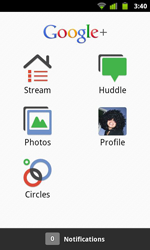 Google+ Mobile – Right now, Google+ app is available for Android-running devices only, but a native app for iPhone is expected to be released soon. In addition, mobile users with Blackberry (6.0+), Nokia/Symbian, and Windows Mobile-running devices could access some basic features by loading https://m.google.com/app/plus/ in their mobile browsers.
Google+ Mobile – Right now, Google+ app is available for Android-running devices only, but a native app for iPhone is expected to be released soon. In addition, mobile users with Blackberry (6.0+), Nokia/Symbian, and Windows Mobile-running devices could access some basic features by loading https://m.google.com/app/plus/ in their mobile browsers.
Instant Upload – Another convenient feature that allows users to upload their photos to Google+ and store them in albums, organize them, and share them with their circles if they choose to.
With some privacy concerns raised by Facebook’s controversial face recognition feature, are we likely to see millions of users leaving the biggest social network and migrating to Google+? It is probably still too early to answer this question, but it seems that Google has finally taken a step in the right direction and their project is already attracting a lot of interest. The mere fact that the registration is periodically turned on and off indicates that the influx of users is far greater that they have expected. However, some have expressed the concern that the integration of Google+ with all other Google services could make it far too complex for certain users and that these users are likely to stick to the social network that they know and love – Facebook!
Take A Break With These 10 Awesome Time Wasting Sites

When you spend countless hours working and worrying about your day-to-day tasks, it is always good to take a few minutes break, watch a funny video, read a funny story, and take a break. Many of the popular Web 2.0 sites are loaded with funny videos from all over the globe and offer something for everyone – you can watch pranks clips, professional stand-up comedians, or browse some of the amateur uploaded flicks. While YouTube remains the best-known video sharing website, there are great many others, where you can find hilarious videos in every possible category:
1. Funny or die
Loaded with exclusive videos and pictures, where you can watch some of the World’s top comedians, actors, and celebrities in action. Head over to the website, check out the most popular videos, take a look at the hilarious photos, read a couple of stories, have a good laugh, and start or join a discussion.

2. Break.com
A sharing site with videos, games, and pictures, listed in different categories and channels. You can find movie trailers, actions, pranks, sport videos, and even a 3D channel.

3. The Onion
Another very well-known website, where you can find tons of excellent content. Radio, video, sports, politics, TV, and even Sci and Tech section – no matter what you are into, you are likely to find it here.

4. Comedy Central
The place, where you can watch not only videos, but also full episodes and stand-up comedy, as well as play games, read blogs, and have a great time. There are at least ten great shows to follow at every given moment and thousands of hilarious videos well worth checking out.

5. Late night mistakes
If you are searching for super-funny, user-submitted pictures, then you should definitely check out the website.

6. YouTube
The biggest video sharing website offers millions of video clips, which could definitely brighten your day. Content is uploaded daily and you can find comedy, news, sport, music, film, how-to and great many other types of fresh videos, which will keep you glued to the monitor for hours.

7. College Humor
Has some excellent original series and videos, as well as pictures and articles in great many categories. The site offers animations, celebrity videos, sketches, music clips, live chat, and RSS feeds with the best of College Humor.

8. I can has cheeseburger
Has one of the funniest animal video and picture collection, coupled with pictures and videos of celebrities, babies, weddings, and just about anything funny you can think of. You can rate the content on-site, share videos or photos that you like with your friends, and cast your vote for the funniest of them.

9. Video Bash
Has some truly awesome videos, pictures, and games, which are well worth checking out.
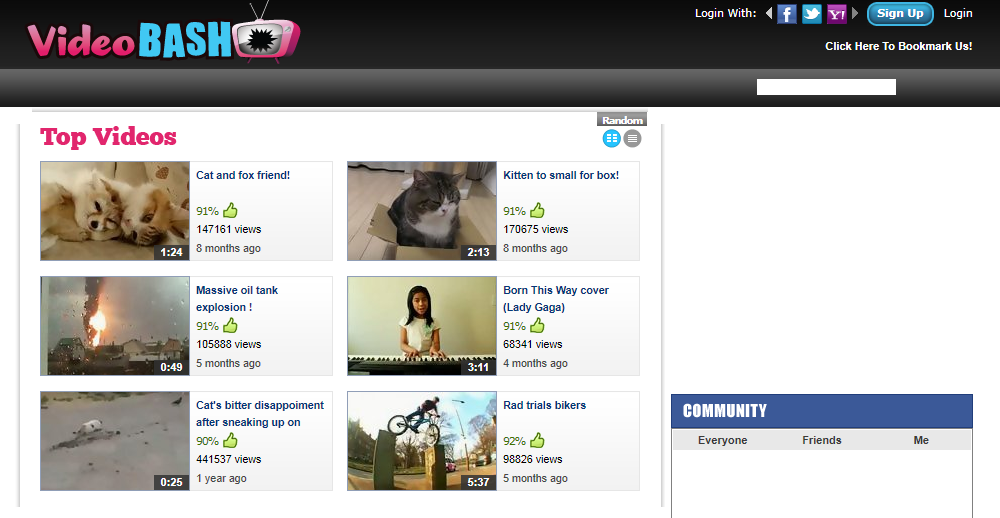
10. Fail Blog
Everybody loves “fail” pictures and videos, and the Fail Blog has thousands of them. This is the “I can has cheeseburger” sister website and you are guaranteed to find the funniest videos and photos in more than a dozen different categories, ranging from Party Fails to Work.

What is your favorite site to visit and kill a little time? Please share with us in the comments.
Web Designer vs. Web Developer – What what should I be?

Working online or in a young and dynamic IT company as a web designer or web developer has great many advantages and can be quite rewarding and satisfying, but if you have to choose your career path right now, you need to weigh carefully the pros and cons of each option. In addition, if you are about to start working for yourself, you need to evaluate your own capabilities and take a closer look at the earning potentials of each profession. Quite often, the line between web designers and web developers is blurred as most designers are likely to be able to code at least basic web sites and some developers might dabble in web design as well. A web designer is a person, who is capable of designing logos, banners, or other graphical elements, as well as whole web pages, while the web developer is the person, who is more involved on the technical side of the web building and adds functionality to the web sites.
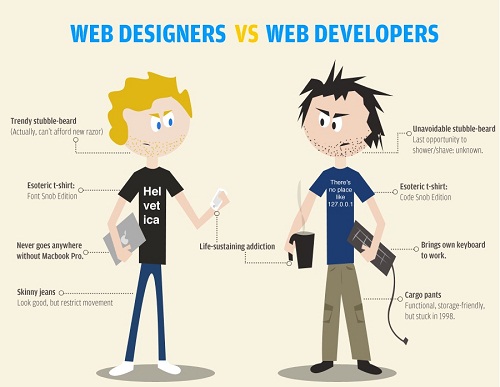
When deciding on your career move, it is always best to start with your own abilities – with practice, everyone could become a designer or developer, but only a small portion of all designers are extremely talented and not all developers are highly skilled. If you are artistic, then looking into designing is logical, and if you love math and tackling logical problems, then becoming a developer or programmer might be your best choice. Both titles are involved in web development and quite often, they have to learn the skills of the “other half” since a designer needs to know how his or her work will fit into the site development and vice versa. When it comes to the learning curve, many consider web development tougher, especially if it involves programming, but this is not entirely true. In order to become a good designer, you would need to spend quite a bit of your time trying new tools, following trends, learning new techniques, and staying tuned to the latest design principles. A designer also needs to be far more creative and when it comes to working with clients, the designer’s job could be far more challenging since their work is often evaluated subjectively by the customer.
Both the designers and developers are spoiled for choice when it comes to groups, forums, resources, and sites, where they can find inspiration, learn new skills, speak to likeminded people and colleagues. This is one of the most rewarding parts of working online since you can easily find someone to speak to, ask a piece of advice, or find a resource to master new techniques and learn more on the latest technologies.
Earning potential – statistical data shows that developers have a potential for higher earnings, but this greatly depends on the skill level and various other factors. The higher earnings of the developers are partly fueled by the explosion of the mobile Internet market and the great demand for mobile applications, coupled with the ever-growing demand for interactive Web 2.0 websites. On the other hand, web designers, who know how to market themselves, know how to organize their time better, and work in a specialized market could earn more than many developers.
Both designers and developers are facing similar challenges, but the demand for their services is expected to keep growing, despite the stagnated economy. The number of websites is growing at an exponential rate and individuals and corporate clients are constantly seeking talented designers and experienced developers for their projects. Whatever choice you make, you are likely to be entering an interesting and demanding field, where your own determination and efforts are the only factors that will determine your success or failure. If you decide to start working as a web designer, often you will find yourself working closely with web developers and vice versa, and if one day you decide to run your own company, then having both designers and developers on your team is likely to land you more projects and bring higher profits.
Media PCs – What does it take to build the ultimate entertainment device?

Setting up a home theater, which enables you to enjoy watching high definition movies, listen to music, and surf the Internet at the same time is possible with the use of a media center PC. The media center PC is a computer, which serves as a video and audio source all in one, supports the highest definition PC and TV picture formats and the most widely used audio codecs and formats at the same time. Instead of linking a separate DVD player, Blu-ray player, gaming console, and a set-top box to an HDMI switch and then to your plasma TV, you can have a single media center PC, which would allow you to enjoy watching high definition movies, listen to music, display and preview photos, as well as use it as a regular computer. In addition, the unit could be used to record movies, download content, tune in to live Internet radio stations, play games, and more.
Media Center PC Components
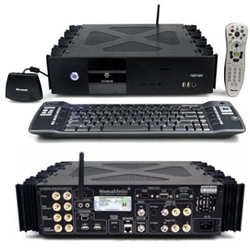 Powerful processor
Powerful processor
Since you are likely to be running multiple programs all at once and you would want to be able to watch high definition movies, a powerful processor is a must.
Powerful graphic card
A high end graphic card with at least 1GB of memory is highly recommended
High capacity, fast hard drive
The higher speed of the computer’s hard drive ensures faster response and its high storage capacity would let you store greater numbers of movies, music, and any other content
Memory
At least 2GB, but preferably 4GB or RAM or more
TV Tuner
Today’s TV tuners are typically USB devices, which come in all flavors. A dual TV tuner, which allows you to watch one program while recording another or a hybrid TV tuner, which is capable of receiving both analog and digital signal would be a great addition to a Media Center PC
Blu-ray and DVD drive
External card reader
Monitor
Depending on the intended usage, having a separate computer monitor and having the computer linked to a large TV screen would be ideal. This would allow you to watch the movies on a wide TV screen and use the computer monitor when surfing or editing documents.
Connection options
Since HDMI is de facto the standard interface, having a video card and monitor with HDMI slots is perfect, but other connection types, which would allow you to connect the PC to older equipment might be necessary as well
Width, weight, and appearance
When you are building a home theater, you would want a media center PC, which is stylish, compact, slim, and quiet
Remote control
Network Attached Storage (NAS)
Even the largest hard drive could easily run out of space as more and more content is saved on it, and in that case, connecting the media center PC to a Network Attached Storage is desirable since the storage capacity of the NAS could be easily extended as the needs of the user change
A media center PC should have a solid power supply, adequate cooling system, and motherboard, which can take more components if needed. It is obvious that such PC is likely to cost quite a bit more than the average computer as it requires the best hardware in order to perform all its functions. However, the advantages of building a good media center far outweigh the higher cost though as you can have an all-in-one home theater that allows you play the latest PC and TV video formats and listen to surround sound music.
Media Center PC Software
In most cases, a media center PC needs specialized software, which allows the users to take control over the various functions from a distance. All good media center software packs come with built-in media players, support for various commonly used codecs, support for different aspect ratios and TV and PC video formats, and support for most commonly used audio formats and codecs. In addition, the software normally uses graphical interface, which allows the users to organize their content easily, manage the media files, and make use of plugins, which could extend the software’s functionality.
XBMC (formerly Xbox Media Center)
 A cross-platform media center software, which allows the users to manage their media center PC with remote control and easily manage all their content. XBMC uses the so-called 10-foot user interface, which comes with icons, fonts, and menus that make it easy to read and use from 10 foot distance. Originally developed for the first Xbox, the software can now run on Linux, Mac OS X, and Windows machines and supports user-created plugins that can connect the media center PC to YouTube, Netflix, Grooveshark, Hulu, Pandora Radio, and other content streaming websites.
A cross-platform media center software, which allows the users to manage their media center PC with remote control and easily manage all their content. XBMC uses the so-called 10-foot user interface, which comes with icons, fonts, and menus that make it easy to read and use from 10 foot distance. Originally developed for the first Xbox, the software can now run on Linux, Mac OS X, and Windows machines and supports user-created plugins that can connect the media center PC to YouTube, Netflix, Grooveshark, Hulu, Pandora Radio, and other content streaming websites.
Windows Media Center
 A software pack for Windows running media center PCs and when coupled with third-party PVR software offers excellent functionality. The latest versions of Windows Media Center supports MPEG2 codec and the software allows its users to create virtual channels without TV tuner, copy remote content, launch TV from the start menu, use rating controls, create slide shows, and more.
A software pack for Windows running media center PCs and when coupled with third-party PVR software offers excellent functionality. The latest versions of Windows Media Center supports MPEG2 codec and the software allows its users to create virtual channels without TV tuner, copy remote content, launch TV from the start menu, use rating controls, create slide shows, and more.
Front Row
 The media center software of choice for Mac OS X users. The software comes with 10-foot user interface and allows the users to access their hard drives and play various media files via a remote control, access their iPhoto and iTune libraries, control the DVD drive, or play any content, which has been saved on the hard drive.
The media center software of choice for Mac OS X users. The software comes with 10-foot user interface and allows the users to access their hard drives and play various media files via a remote control, access their iPhoto and iTune libraries, control the DVD drive, or play any content, which has been saved on the hard drive.
There are two ways to get a decent media center PC – buy one or custom-build one by ordering all the hardware and software, which you need. In either case, you are likely to spend quite a bit of money, but end up with a super fast and powerful computer, which can not only play back all popular media file formats, but seamlessly integrate with your existing home theater video and audio equipment as well.
A media center PC can change the way you watch television and movies as well as listen to music, but you have to use the right components. Do you have a media center PC; or want one? Share your experiences with us in the comments.
Internet Radio: The Absolute Best Music Streaming Sites Around

With the explosion of the new technologies, the Internet is now offering more content than ever before and there are hundreds of websites, which stream music. These websites offer songs from various artists, in different genres, and definitely have something for every taste and while some of them used to struggle to stay profitable, others have attracted enough advertisers and subscribers to sustain their operation and offer superb service. For the end user, being able to listen to music on his or her computer, iPhone, or smartphone is just a part of the equation as some of the music streaming websites allow their users to create their own playlists, rate songs, interact with other users, and find out what friends and strangers are listening to or like. Here are the top ten music streaming websites, where you can listen to music online:
1. Pandora
One of the best-known music streaming sites, which allows its users to create profiles, search for albums or artists, listen to shared stations, find other listeners, and recommend songs to their friends. The website has a mobile version, which is easy to browse and use on any iPhone, Blackberry, Palm pre, or Smartphone, running Android or Windows Mobile.
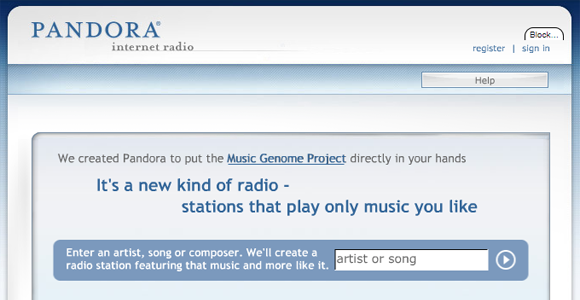
2. Shoutcast
Has more than 45 000 Internet stations, which offer music in more than twenty different genres, ranging from folk to heavy metal. The top Internet stations are listed on the main page and the search option allows you to find easily songs, artists, or stations of your liking. Help section with Wiki, FAQ, forums, and Settings will guide you through the site, and you can listen to the stations either in your browser, Winamp media player, or on your iPhone, using the free SHOUTcast iPhone app.
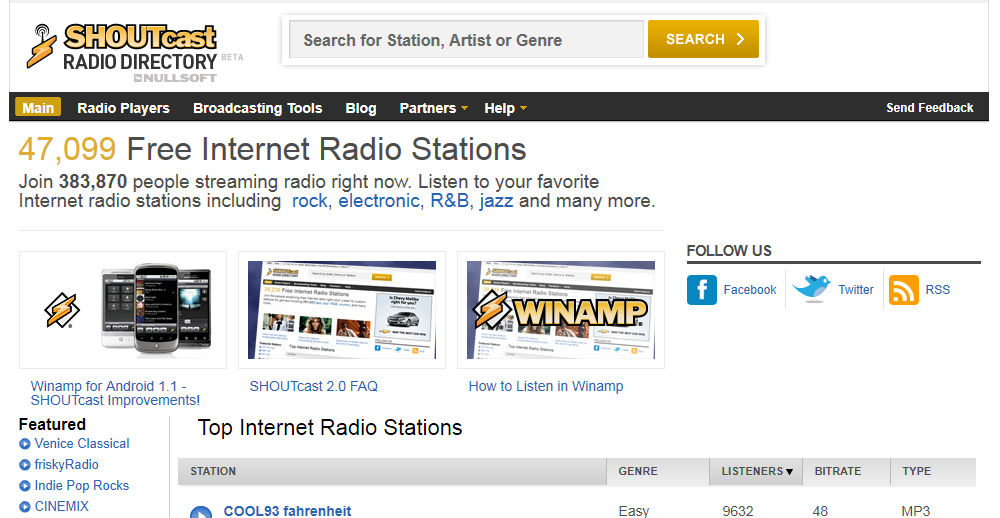
3. Live365
Another popular music streaming website, which has thousands of radio stations to choose from. You can tune in to the most popular ones, check out the featured and recommended, or search for a station by genre. For uninterrupted and ad-free listening, Live365 offers VIP subscription packages.
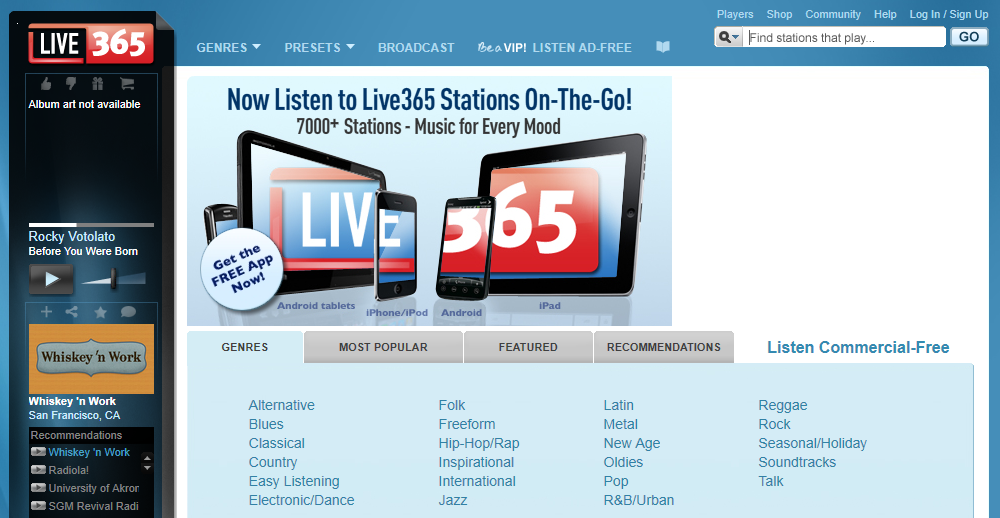
4. Last.fm
A music-streaming website with various Web 2.0 features. It allows you to listen to some of the most popular bands and artists, runs weekly artists and track charts, recommends music, based on your preferences, and has a large community with hundreds of music groups.
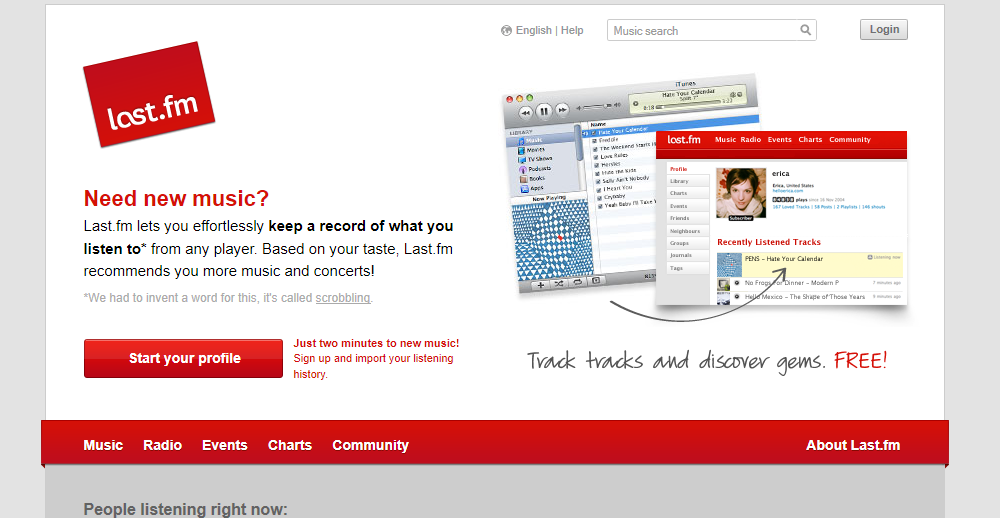
5. MOG
Available on computer, iPhone, iTouch, and Android running Smartphones. MOG is a paid service, which allows the users to create their own playlists, listen to artist-based stations, and run fast search as well.
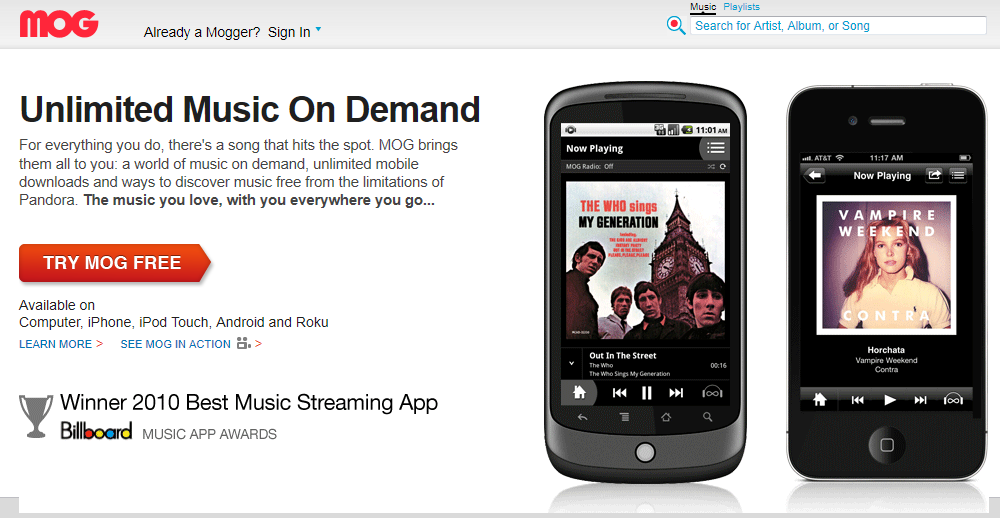
6. Spotify
With more than 13 million songs and accessible from a PC, Mac, or mobile phone, this is one of the best-known services with millions of users. The users can easily share the songs that they like and their playlists with their friends on Facebook, read artists biographies, create their own music libraries, and buy music tracks or entire playlists.
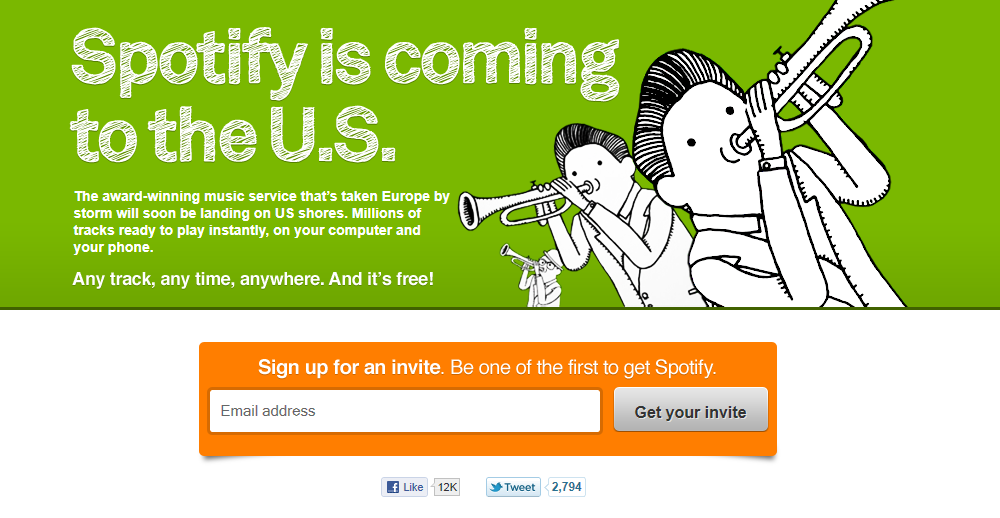
7. MySpace Music
Backed by one of the biggest social websites, this is also one of the richest music streaming resource, offering millions of songs by thousands of artists, music videos, charts, new releases, music news, and more. You can build your own playlists, share them with friends, and learn more on upcoming events.
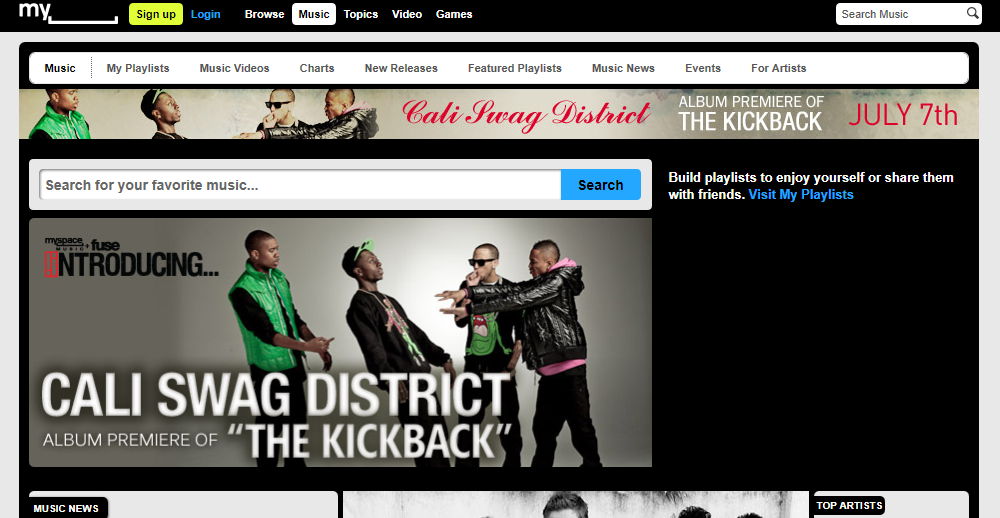
8. Rdio
Delivers access to millions of songs from your computer or mobile phone. The service is paid and it offers Rdio Web and Rdio Unlimited subscriptions, as well as a 7-day trial.
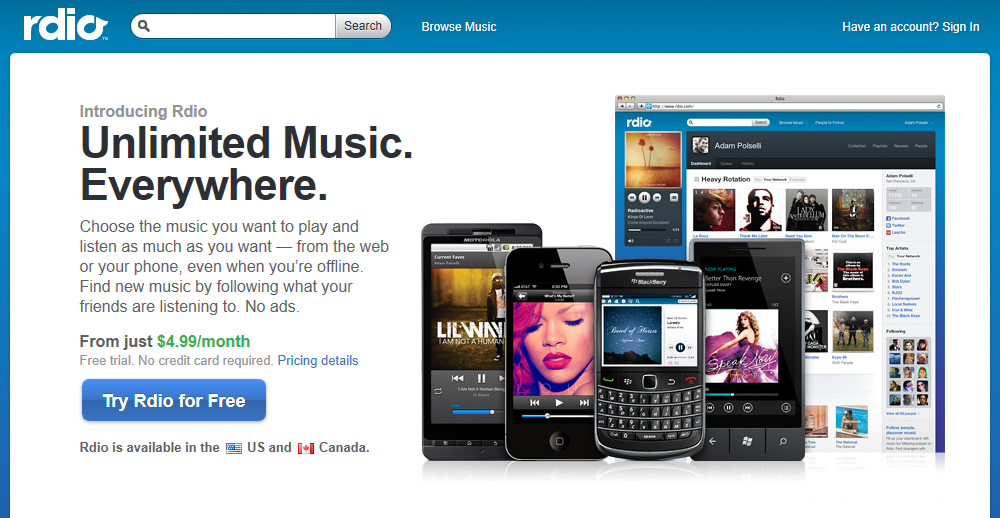
9. Blip.fm
Gives you access to millions of songs and it allows you to share your music on Twitter, Facebook, and other social network websites. In order to learn what a “blip” is or how to give props, head over to the FAQ section.
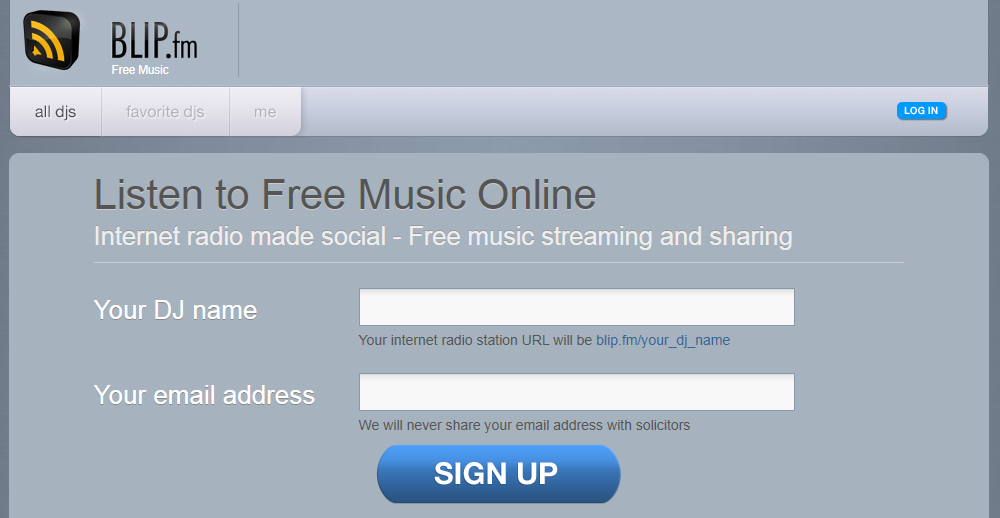
10. Rhapsody
One of the pioneers and has more than 10 million songs for you to choose from. The website offers free two weeks trial, has more than 150 live stations, and allows its subscribers to download songs to mobile devices, build their own playlists, and search the song database by genre, artist, or title.
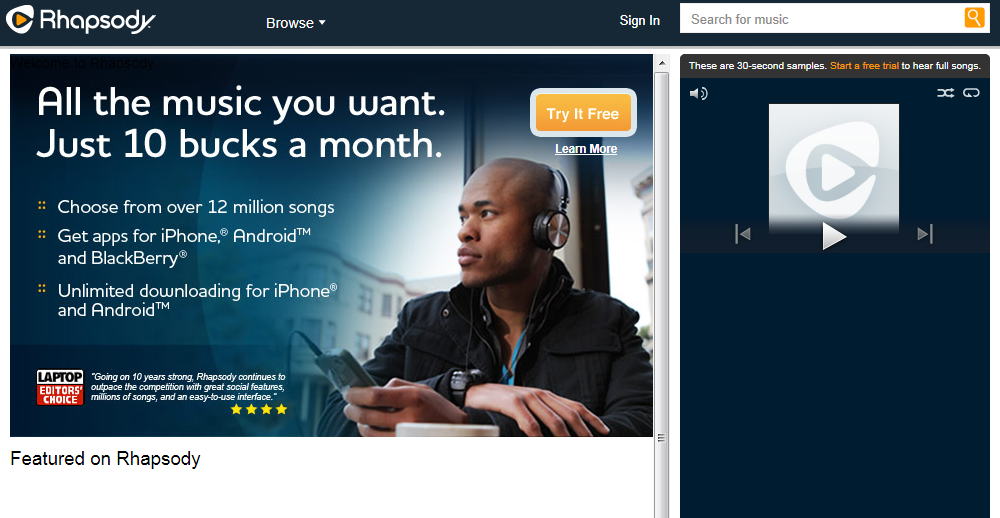
There are many more sites out there that provide streaming music. What is your favorite? Please let us know in the comments.
Digital Thieves – What to do if they steal your design or content

 Working online carries a great number of advantages, but it has its flaws as well – as a web designer, it is next to impossible to prevent your work from being stolen and once stolen, it is often quite difficult to have it removed from the offending website. At times, the perpetrator might reside and host their websites in countries and jurisdictions, which are not too keen on enforcing copyright protection laws, which further complicates the matter. There is a lot a web designer and web developer can do in order to prevent this from happening, but the most important factor is to find the right approach, which is likely to deliver good results quickly. Filing a legal complaint could make a difference, but is often costly, slow, and ineffective and sending hundreds of angry emails is not the right solution either. What to do if someone steals your design work or content:
Working online carries a great number of advantages, but it has its flaws as well – as a web designer, it is next to impossible to prevent your work from being stolen and once stolen, it is often quite difficult to have it removed from the offending website. At times, the perpetrator might reside and host their websites in countries and jurisdictions, which are not too keen on enforcing copyright protection laws, which further complicates the matter. There is a lot a web designer and web developer can do in order to prevent this from happening, but the most important factor is to find the right approach, which is likely to deliver good results quickly. Filing a legal complaint could make a difference, but is often costly, slow, and ineffective and sending hundreds of angry emails is not the right solution either. What to do if someone steals your design work or content:
It is always good to know your rights – the Digital Millennium Copyright Act is the act, which prevents other people from using your work, but the act is not without its flaws or “loopholes.” It has a fair use clause, which can be exploited by people that have decided to use somebody else’s content or design work, and there have been a number of high profile cases, where the judges have ruled in favor of the person(s) who have used the content since each case is different. However, there is a lot you can do on your own, without having to hire a lawyer, and if another person has decided to “borrow” your design and is reselling it or have used it in their work without your consent, then they are unlikely to argue a fair use clause.
1. Contact the Perpetrator
 In many cases, simply sending an email is all that is needed. You should keep calm, avoid using strong words or insults, and provide enough evidence that the work that they are using is yours – keep in mind that the person, who is using the design on his or her website might not be the one that has stolen the content. Send them a polite, but firm email demanding immediate action and ask them to take your work off, and if they have taken only a small design element, then you might actually think of permitting them to use it in exchange for a link back, small compensation, or whatever you deem fair.
In many cases, simply sending an email is all that is needed. You should keep calm, avoid using strong words or insults, and provide enough evidence that the work that they are using is yours – keep in mind that the person, who is using the design on his or her website might not be the one that has stolen the content. Send them a polite, but firm email demanding immediate action and ask them to take your work off, and if they have taken only a small design element, then you might actually think of permitting them to use it in exchange for a link back, small compensation, or whatever you deem fair.
2. Write a Copyright Infringement Letter
If sending an email did not get the desired result, you can send a copyright infringement letter. The DMCA act has a few guidelines on how to write such letter, but there are quite a few free templates available online as well. The DMCA letter will put additional pressure on the offender and could force them to stop using your work.
3. Contact the Perpetrator’s Webhost
Almost all webhosts have solid terms of service, which prohibit webmasters from using stolen content and are likely to react to your email. Keep in mind that many repeat offenders use webhosts, which are likely to overlook the webmaster’s actions, especially if the latter are paying high monthly bills. In such case, you could try finding the webhost’s upstream provider and forward your letter to them as well.
4. Contact the Domain Name Registrar
Some domain name registrars take these types of complaints very seriously, while others seem to ignore them completely, yet this is a step, which might help your case.
5. Contact the Content Thief Advertisers
Similar to the web hosts, most advertisers do not tolerate copyright infringement, and contacting them could serve as a strong motivation for the perpetrator to stop using your work.
6. Request a Search Engine Ban
Before contacting the major search engines, make sure that you have collected and attached enough evidence to prove that you are the rightful owner of the disputed content. MSN, Google, and Yahoo have procedures, which you should follow when making claims of copyright infringement.
7. Go Public
If the webmaster or designer, who is using your work is a member of a community, forum, interest groups, then going public might force them to listen to your demands.
8. Hire a Lawyer
 This could be time-consuming and costly, so should be your last resort. Hiring a copyright attorney might make sense when “the crime” justifies the time and resources that you are likely to spend on pursuing your case. There are various large and smaller firms, which specialize in Internet law and copyright infringement in particular and seeking their services is likely to deliver faster and better results that contacting a firm, which deals predominantly with family law cases.
This could be time-consuming and costly, so should be your last resort. Hiring a copyright attorney might make sense when “the crime” justifies the time and resources that you are likely to spend on pursuing your case. There are various large and smaller firms, which specialize in Internet law and copyright infringement in particular and seeking their services is likely to deliver faster and better results that contacting a firm, which deals predominantly with family law cases.
9. Register Your Work with the US Copyright Office
Visit their site to read more on how you can register your work and what methods of registrations to use.
10. Prevention
While taking down your work from another person’s website could be quite frustrating and time-consuming, you can take a few preventative steps as well. For starters, displaying a clear message that your work is protected by copyright might deter some potential perpetrators and adding a watermark to your images and files is yet another step in the right direction. When adding images to your portfolio, you could use simple JavaScript on the page, which prevents the users from right clicking on the images and saving them to their hard drives. In addition, editing your site’s .htaccess file will disable hotlinking and could discourage other webmasters from posting your work on their sites and blogs. There are software packs, which allow you to display images using java applets or other technology, which makes it far more difficult to copy an image from a website. However, any person, who is determined enough, will copy your work as long as it is displayed online. If, or rather when, your work is stolen, follow some or all of the above-mentioned steps and you are likely to get results.
Has your work been stolen? Please share your experiences and tips with us in the comments.
10 Best Websites to Learn jQuery
While there are many programming languages that can help you create interactive pages, JavaScript was the true pioneer, which was developed back in the days, when every single web page was static. JavaScript is a powerful scripting language, which is relatively easy to use and implement, offers many possibilities to the web developers, and it is speedy and versatile. Being a client-side script, it does not add additional load to the server and it is extremely fast; if you are interested in learning JavaScript, here are the top ten websites, which will get you started:
1. W3Schools
Has more than 20 JavaScript texts, which cover topics from introduction to the scripting language to advanced matters such as cookies, validation, timing, and objects.
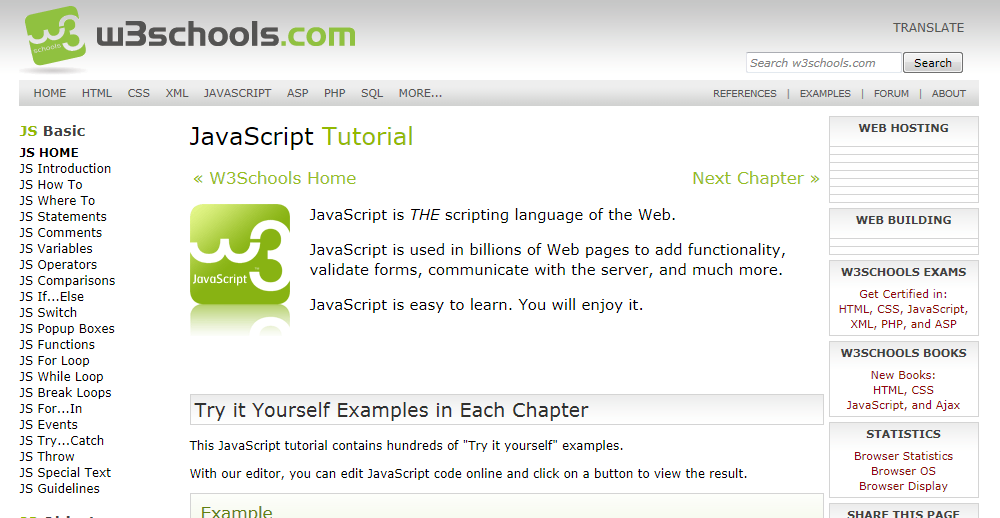
2. jQuery
jQuery offers tutorials in 20 different languages, including English, and these tutorials range from general to advanced.
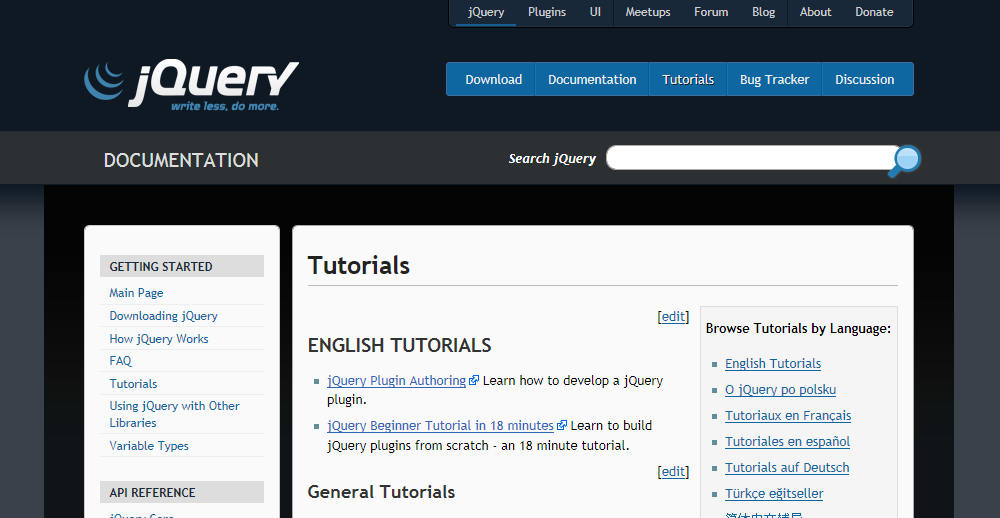
3. Web Developer Juice
Has a number of very well written tutorials on a wide array of topics such as photo effects, HTML form creation, sliders, and galleries. The tutorials are supported by demos and sample code, and references and examples are included as well.
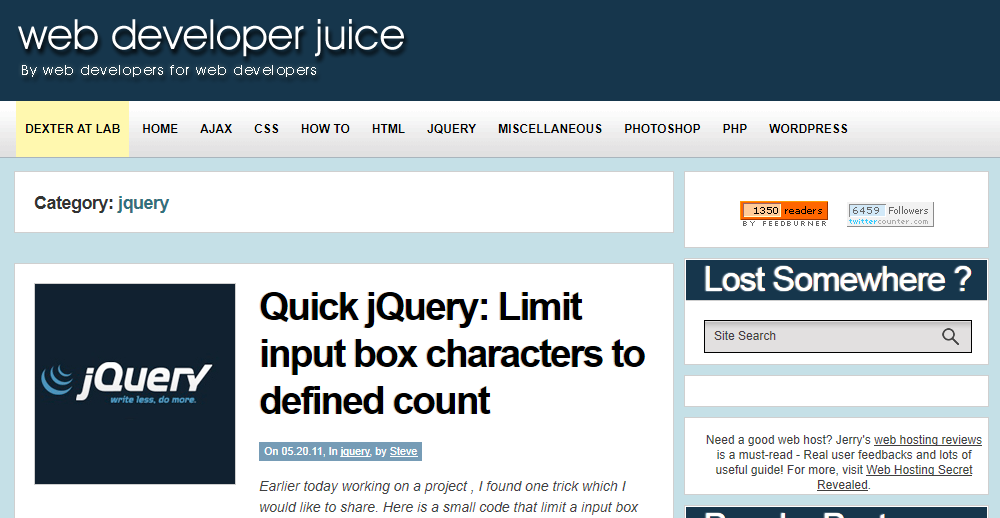
4. Code Snippets
If learning by example is your forte, then this is the site to bookmark. It has great number of code snippets that will let you learn how to use almost every feature of JavaScript.
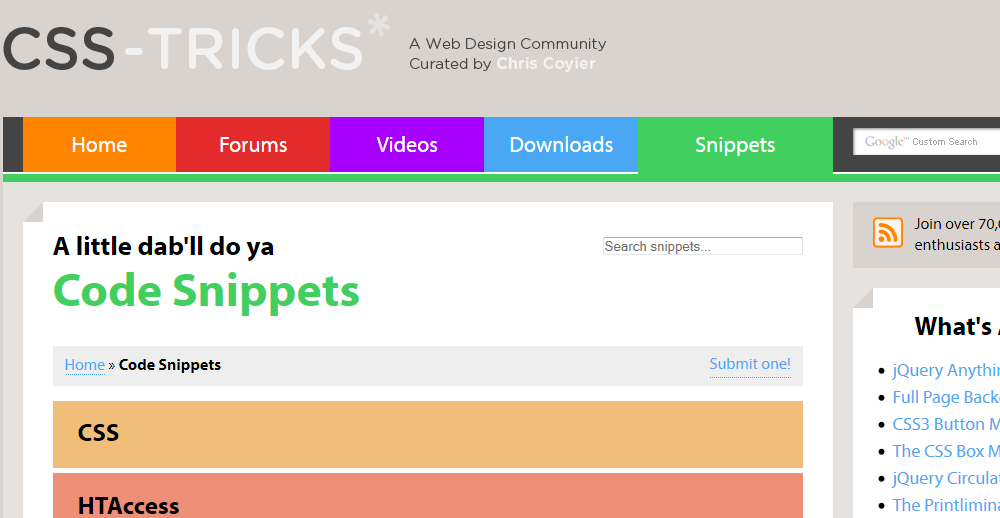
5. Tutorialzine
Has a number of jQuery tutorials, all of which well written and accompanied with demo and code snippets. In addition, a direct download of the used code is available as well, allowing the user to grab the code and try it on his or her computer instantly.
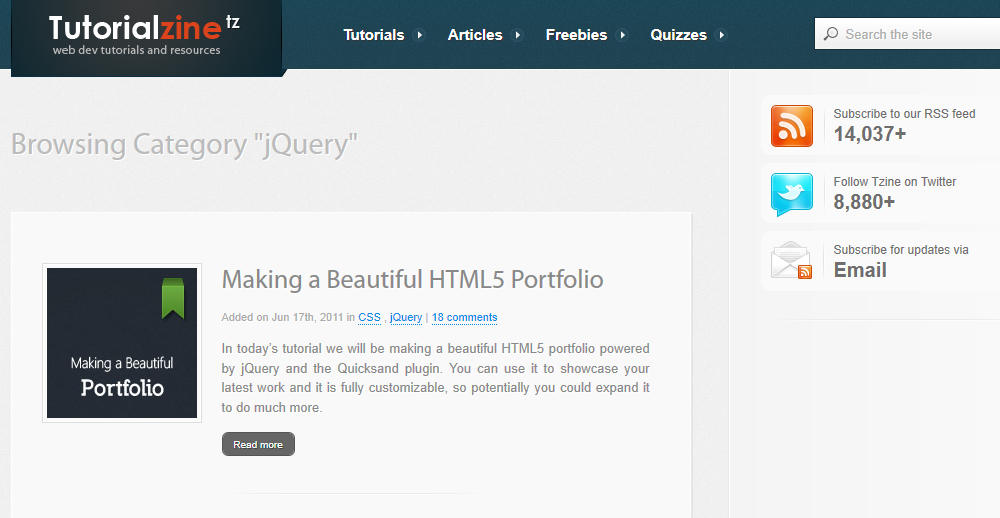
6. Net.tutsplus
Has quite a few excellent JavaScript tutorials, most of which offer source files download. Some of the tutorials require premium membership, which costs $9 per month at the time of this writing.
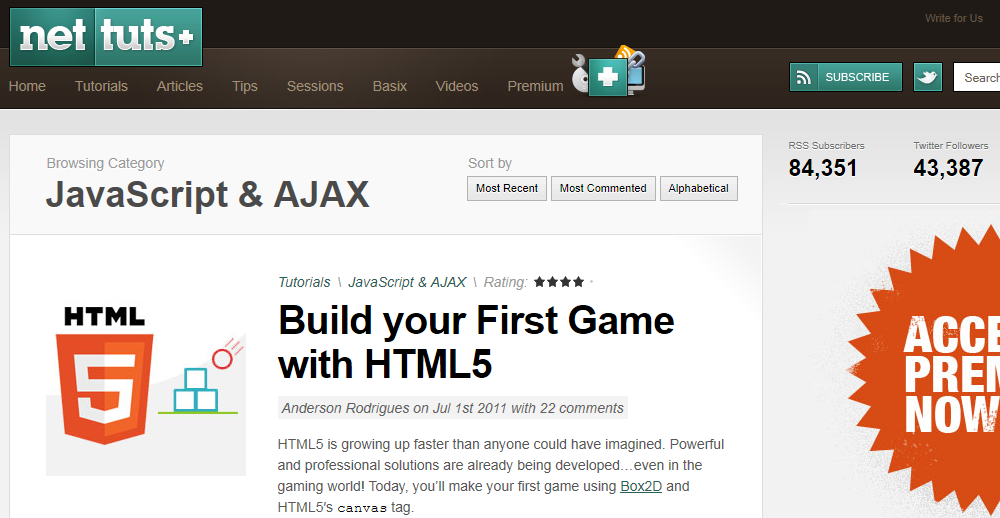
7. HTMLGoodies
Is one of the oldest HTML tutorials sites and has a JavaScript section, loaded with articles and tutorials. For the beginners, the ‘JavaScript Basics” series is perfect as it covers from the most basic to the more advanced topics.
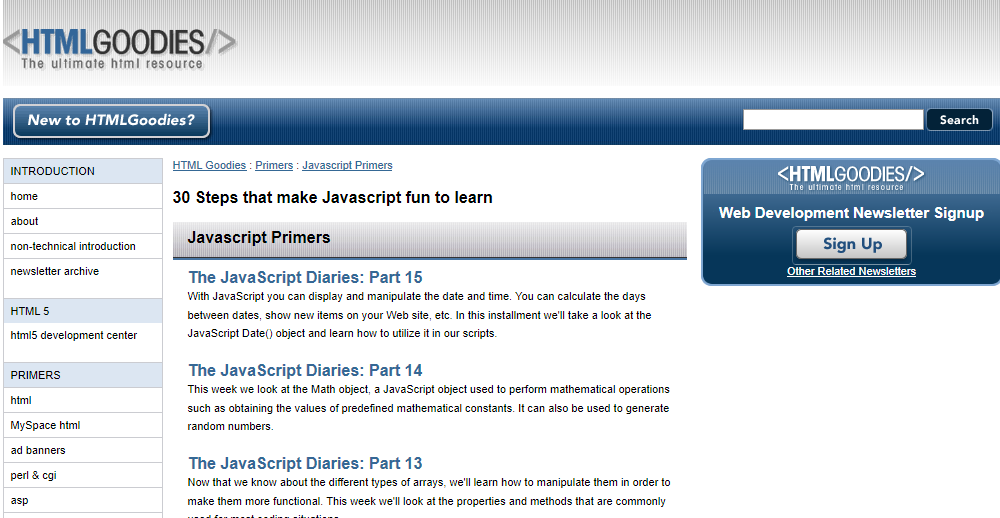
8. Learning jQuery
One of the best-organized sites, where you can search the tutorials by keyword and browse them by categories. In addition, they are divided into beginner, intermediate, and advanced levels, and are supported with code snippets.
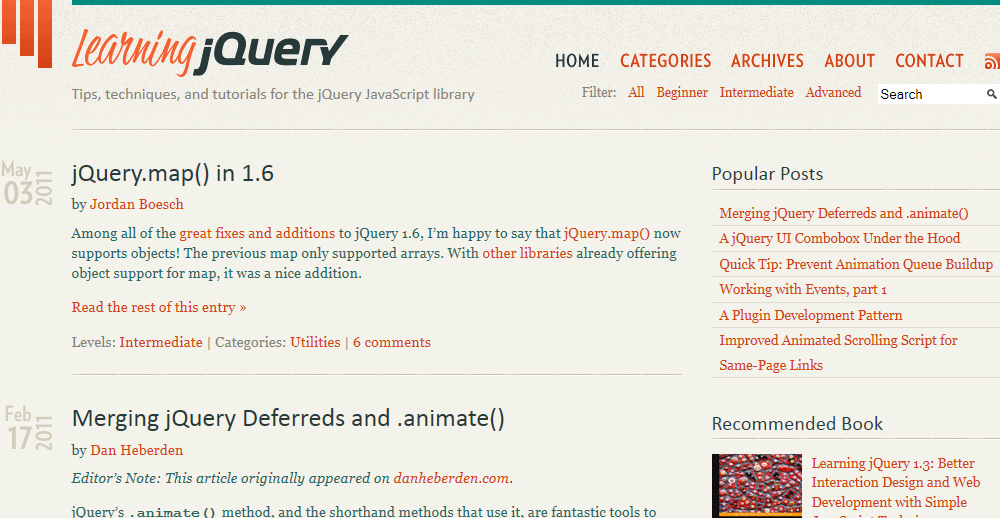
9. Pro Dev Tips
Has some excellent posts on jQuery. Definitely worth checking out regardless of your skill level.

10. David Walsh
Covers a great array of topics, including PHP, HTML5, and CSS, and its JavaScript section covers jQuery, MooTools, and Dojo. David Walsh works for a known JavaScript developing company and all his tutorials are easy to read and cover many interesting topics.
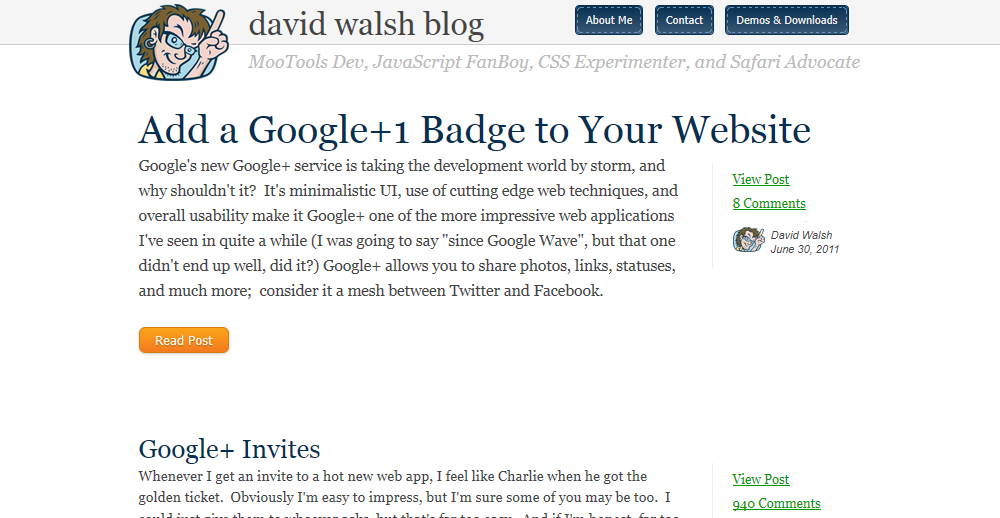
In the market for a new TV? Find out the best time to buy one!
If you are on the market for a new TV, you might want to know when is the best time to buy one – are the post-Christmas sales offering the best deals or are the pre-Super Bowl deals better? Of course, if you are buying a second or third, small and rather cheap TV, then there is no need to hunt down for the best bargain, but if you are after a large LCD or plasma or a $3 000 3D TV, then buying at the right time could result in significant savings.
 Christmas sales – This is the time, when many retailers compete for your dollar and these are the sales, when you might find some great deals. Many retailers slash their prices in order to attract customers and between Thanksgiving and Christmas, they are normally trying to sell as many high-priced items as possible. The post-Christmas sales, on the other hand, might or might not be a good time to buy a TV, depending on how well the merchants did during the holiday times – if they manage to sell most of their items during the Christmas sales, then there is no treason for them to offer bargains afterwards. However, the opposite is also valid and if the sales a poor during the holiday season, some retailers offer good deals right after Christmas or after New Years’ day.
Christmas sales – This is the time, when many retailers compete for your dollar and these are the sales, when you might find some great deals. Many retailers slash their prices in order to attract customers and between Thanksgiving and Christmas, they are normally trying to sell as many high-priced items as possible. The post-Christmas sales, on the other hand, might or might not be a good time to buy a TV, depending on how well the merchants did during the holiday times – if they manage to sell most of their items during the Christmas sales, then there is no treason for them to offer bargains afterwards. However, the opposite is also valid and if the sales a poor during the holiday season, some retailers offer good deals right after Christmas or after New Years’ day.
Another way to pay less and obtain a decent TV is to purchase an older model. As soon as the merchants receive new inventory, they would try their best to unload the older models. If you are not interested in ultra-thin, Internet-enabled TV, then buying a year or two older model will still give you a top quality picture and sound and all the functions that you need. Often, these are the models, which you can find on sale in the beginning of the year or in the August-September period, when many of the merchants receive new inventory. If you happen to like the features of a TV, which had just been released, then waiting a few months is likely to get you the same TV at a lower price. According to many specialists, we are not likely to see any major improvements in the TV technology in the next year or two and buying an older model right now makes perfect sense.
 The week before the Super Bowl has been always considered a good time to buy a TV since many retailers slash their prices by 20% and even 30%. However, if you wait just a bit longer, you might get the TV that you are after at even lower price – since the economy has not really picked up yet many of the retailers are expected to have leftovers that they are likely to mark down.
The week before the Super Bowl has been always considered a good time to buy a TV since many retailers slash their prices by 20% and even 30%. However, if you wait just a bit longer, you might get the TV that you are after at even lower price – since the economy has not really picked up yet many of the retailers are expected to have leftovers that they are likely to mark down.
When it comes to buying a 3D TV, waiting a few more years might be the wiser approach, unless you have a few thousand dollars that you do not need. The interest in 3D home theatre setups seemed to have picked up after the release of Avatar, but the problem is that there is little 3D content and the 3D-ready television sets are excessively expensive. Most of them still require the use of special glasses for each user and these glasses alone cost $200 or more per pair. The technology is still in its infancy and the 3D Blu-ray disks titles are just a handful; some broadcasters have announced plans for releasing 3D TV programming, but at the time of this writing, there are only two 3D channels in the US, available to DirectTV subscribers.
Of course, waiting forever for newer, better, or cheaper models is pointless and the best time to buy a TV is when you need one. However, with some good planning and a bit of careful research, you can easily land a great deal, buy a decent TV, and get to keep some of your hard-earned money!
If you are on the market for a new TV, you might want to know when is the best time to buy one – are the post-Christmas sales offering the best deals or are the pre-Super Bowl deals better? Of course, if you are buying a second or third, small and rather cheap TV, then there is no need to hunt down for the best bargain, but if you are after a large LCD or plasma or a $3 000 3D TV, then buying at the right time could result in significant savings.
Christmas sales – this is the time, when many retailers compete for your dollar and these are the sales, when you might find some great deals. Many retailers slash their prices in order to attract customers and between Thanksgiving and Christmas, they are normally trying to sell as many high-priced items as possible. The post-Christmas sales, on the other hand, might or might not be a good time to buy a TV, depending on how well the merchants did during the holiday times – if they manage to sell most of their items during the Christmas sales, then there is no treason for them to offer bargains afterwards. However, the opposite is also valid and if the sales a poor during the holiday season, some retailers offer good deals right after Christmas or after New Years’ day.
Another way to pay less and obtain a decent TV is to purchase an older model – as soon as the merchants receive new inventory, they would try their best to unload the older models. If you are not interested in ultra-thin, Internet-enabled TV, then buying a year or two older model will still give you a top quality picture and sound and all the functions that you need. Often, these are the models, which you can find on sale in the beginning of the year or in the August-September period, when many of the merchants receive new inventory. If you happen to like the features of a TV, which had just been released, then waiting a few months is likely to get you the same TV at a lower price. According to many specialists, we are not likely to see any major improvements in the TV technology in the next year or two and buying an older model right now makes perfect sense.
The week before the Super Bowl has been always considered a good time to buy a TV since many retailers slash their prices by 20% and even 30%. However, if you wait just a bit longer, you might get the TV that you are after at even lower price – since the economy has not really picked up yet many of the retailers are expected to have leftovers that they are likely to mark down.
When it comes to buying a 3D TV, waiting a few more years might be the wiser approach, unless you have a few thousand dollars that you do not need. The interest in 3D home theatre setups seemed to have picked up after the release of Avatar, but the problem is that there is little 3D content and the 3D-ready television sets are excessively expensive. Most of them still require the use of special glasses for each user and these glasses alone cost $200 or more per pair. The technology is still in its infancy and the 3D Blu-ray disks titles are just a handful; some broadcasters have announced plans for releasing 3D TV programming, but at the time of this writing, there are only two 3D channels in the US, available to DirectTV subscribers.
Of course, waiting forever for newer, better, or cheaper models is pointless and the best time to buy a TV is when you need one. However, with some good planning and a bit of careful research, you can easily land a great deal, buy a decent TV, and get to keep some of your hard-earned money!

